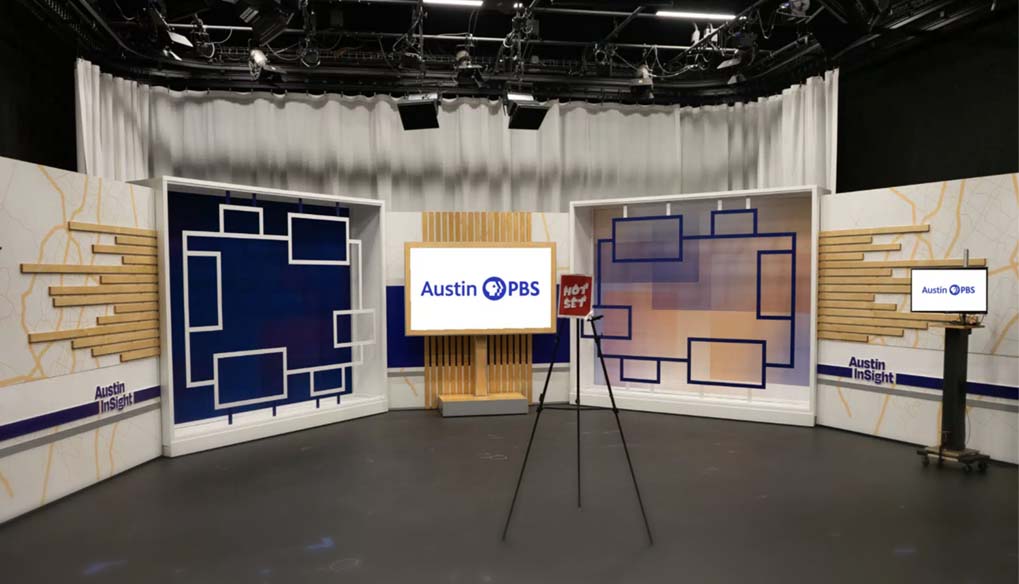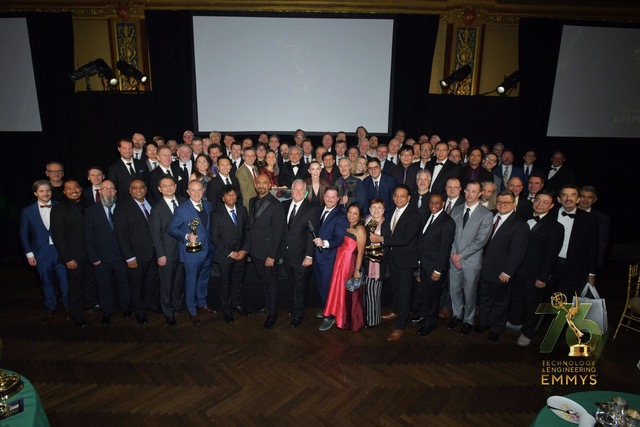Case Study: Building the Future of Public Broadcasting
How Austin PBS, Key Code Media and Ross Video turned a vision into a next-generation media center

For more than 60 years, Austin PBS has been a central part of the cultural fabric of Central Texas, bringing powerful storytelling, trusted journalism and shows like Austin City Limits into homes across the region. As broadcast standards advanced and audience expectations changed, though, Austin PBS realized the station’s infrastructure needed more than a technical upgrade. They needed a transformation.
That vision took shape as the Austin Media Center: A bold, multimillion-dollar facility purpose-built to serve as a production hub, community resource and training ground for tomorrow’s media makers.
The Challenge: A Big Vision
The new Austin Media Center was designed to do it all: support multi-studio broadcasts, enable remote productions, host concerts and community events and give students hands-on experience in real-world broadcast workflows.
The new facility would include three studios, three control rooms, a centralized machine room and a fully integrated postproduction environment. But turning that dream into reality meant navigating more than just blueprints. There were real hurdles—pandemic delays, equipment shortages, and even a brutal Texas freeze that caused significant flood damage to newly installed gear.
Austin PBS tackled it all with the right partners by their side: Key Code Media as the lead systems integrator to guide the technical vision and Ross Video and other vendors to bring the puzzle together—one cable, console and control room at a time.
Ross Video: Tech That Plays Nice
Ross Video didn’t just provide gear—we brought a whole philosophy to the table. Reliable, powerful tools that connect easily to other devices.
Ross equipment played a central role in live production, graphics and media playback, working alongside systems from Clear-Com, Evertz, Sony, Telestream, Adder and Calrec to create a unified, high-performance environment.
The professional video industry's #1 source for news, trends and product and tech information. Sign up below.
But what really stood out was how easily it integrated with other key technologies—everything clicked into place.
Ross gear in action at Austin PBS:
- Carbonite Ultra switchers that power live shows from any studio.
- XPression graphics systems for real-time visuals.
- Tria Express Duet media servers that handle playback like a dream.
“Ross products gave us power and flexibility. Even more impressive was how well they integrated with everything else—making our system feel like one seamless environment.”
—Chris Ostertag, CTO, Austin PBS
The Impact
Key Code Media: More Than Integration—True Collaboration
Key Code Media was more than a technical lead. From day one, they were a true collaborator. From the start, their team worked hand-in-hand with Austin PBS—troubleshooting setbacks, mapping out signal flow and guiding every piece of the project with precision and care. When the flood hit, they rolled up their sleeves and reinstalled over 100 miles of cabling without missing a beat.
Beyond the physical build, Key Code Media made sure the PBS team—and their education partners at Austin Community College—knew how to run the show. Training, support, and teamwork were part of the package.
“Key Code Media didn’t just deliver specs; they stood side by side with us every step of the way. Without them, this facility would not be what it is today.”
— Chris Ostertag, CTO, Austin PBS
Inside the Austin Media Center: Technology That Tells Stories
Production Control & Backbone
- Three switchable control rooms that can manage any studio.
- Clear-Com intercoms, Adder KVMs, Evertz routers, and Telestream monitors.
- A machine room designed for power, redundancy, and remote control.
Studio Magic
- Studio A: A 6,600-square-foot venue for concerts, audience shows, and big moments
- Studio B: A 2,200-square-foot green screen space made for education and virtual sets.
- Studio C: A cozy 1,800 square-foot home for community programming.
- MT Fiber links all three studios for quick reconfiguration and camera swaps.
- Full UHD HDR workflows with Sony cameras, Calrec and DiGiCo audio consoles and professional lighting rigs.
Postproduction, Leveled Up
- Adobe Premiere Pro editing, backed by a 1-PB Facilis storage system.
- Avid Pro Tools with S4 console for immersive 5.1 audio mixes.
- Telestream Vantage for file-based workflows and CatDV for media asset management.
The Big Picture: What This Means for Public Media
The new Austin Media Center does more than produce great content. It empowers Austin PBS to take on bigger, more ambitious projects, collaborate with partners in education and culture and bring new voices and stories to life.
Austin PBS has built more than a studio—it’s created a community hub, a training ground, and a creative canvas for voices that matter. It’s a shining example of what public broadcasters can achieve when they have the right tech—and the right partners behind them.
Broadcasting. Powered by Partnership
When it came time to reinvent its future, Austin PBS didn’t settle. It built something bold—something lasting. Austin PBS had the vision. Key Code Media had the road map. Ross Video and a strong network of technology partners filled in the rest by delivering flexible, well-integrated tech.
Together, they built something bold, resilient and ready for what’s next. And in doing so, they’ve raised the bar. This station is no longer just keeping up. It’s leading the way.
Want to see it in action?

